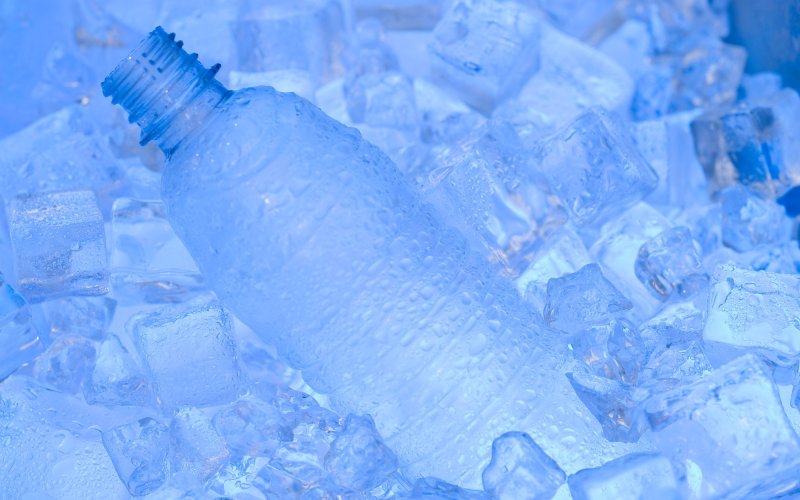Freezing is a process in which a liquid state changes to a solid state. Solid crystals begin to grow in the liquid and more and more molecules of the freezing liquid are added to them. Eventually, one solid block is formed. In water, we call it ice. In order to freeze, the molecules need to get rid of the energy that prevents them from getting a firm grip in the crystal bonds. The faster they shed energy and transfer it to the surrounding environment, the faster the substance freezes.
Water at normal atmospheric pressure freezes at 0 °C. Freezing is accelerated if the water is placed in a colder environment. The colder the surroundings, the faster it removes heat from the water. The rate of heat transfer is also important. If you surround water with a poor conductor of heat, such as air, it will cool more slowly than water from which heat is removed by, say, a piece of iron.
Another thing that will accelerate freezing is the surface area from which heat can be dissipated. This is drained from the surface of the freezing water, or possibly through the walls of the container. If the water is spherical, the surface area from which heat can be removed will be minimal compared to its volume. If the same water is spread in a thin layer, the surface area from which heat can be dissipated will be greatly increased and the water will cool faster.
You can try both of these phenomena. On a frosty day, fill a rubber balloon with water and hang it on a tree. Then pour the same amount of water onto a metal baking tray on the ground. The water on the baking tray will freeze much sooner, even though the amount of water is the same in both cases.
If you don’t have a frosty day, do the same experiment on a smaller scale in the freezer. Water spilled on a plate will freeze faster than water in a glass.
To speed up freezing, it would seem sensible to place water as cold as possible in the freezer. Oddly enough, under certain circumstances, hot water will freeze faster. This strange anomaly is called the Mpemba effect, and scientists still argue to this day about whether it really exists. The phenomenon was discovered by Erasto Bartholomew Mpemba when, as a student, he put a still-hot ice cream mix in his freezer to cool. To his surprise, the mixture solidified before his friend's mixture, which was put into the freezer already cold.
There are a number of possible explanations for the Mpemba effect, some of which attempt to prove that there is no such phenomenon at all. For example, they claim that when hot water is put into the freezer, the thermostat instructs the freezer to cool more intensely, causing the water to freeze faster. Or that a hot container placed on top of the snow melts downwards, so that the snow on all sides effectively removes heat from it, while a container that only touches the snow at the bottom cools more slowly. Alternatively, in an uncovered container, some of the hot water evaporates, which both removes heat and reduces the amount of water that needs to be cooled.
Possible physical explanations for Mpemba’s effect include the theory that during freezing, a patch of ice begins to form on the surface of the cold water, which acts as insulation and temporarily slows the freezing, whereas in hot water, conductive currents are created that mix the contents of the container and keep it from freezing from the top.
A rather interesting explanation is supercooling. At the beginning of solidification, the molecules need to find a place to attach and build a solid crystal. If the water is very pure, they may not find such a place. Without the presence of seed nuclei, which are often impurities or bubbles, the liquid can be supercooled by up to several degrees and still remain liquid. Once something is thrown into such water, the water around the object will rapidly crystallize. Sometimes all you have to do is shake the container of supercooled water. Convection in hot water can prevent supercooling, so that the water freezes sooner, even though it cools more slowly than cold water, which freezes later due to supercooling.
Want to ask something?
Send us an e-mail with the subject “Physics mysteries” to the address:
We can't wait to tackle your interesting questions!





